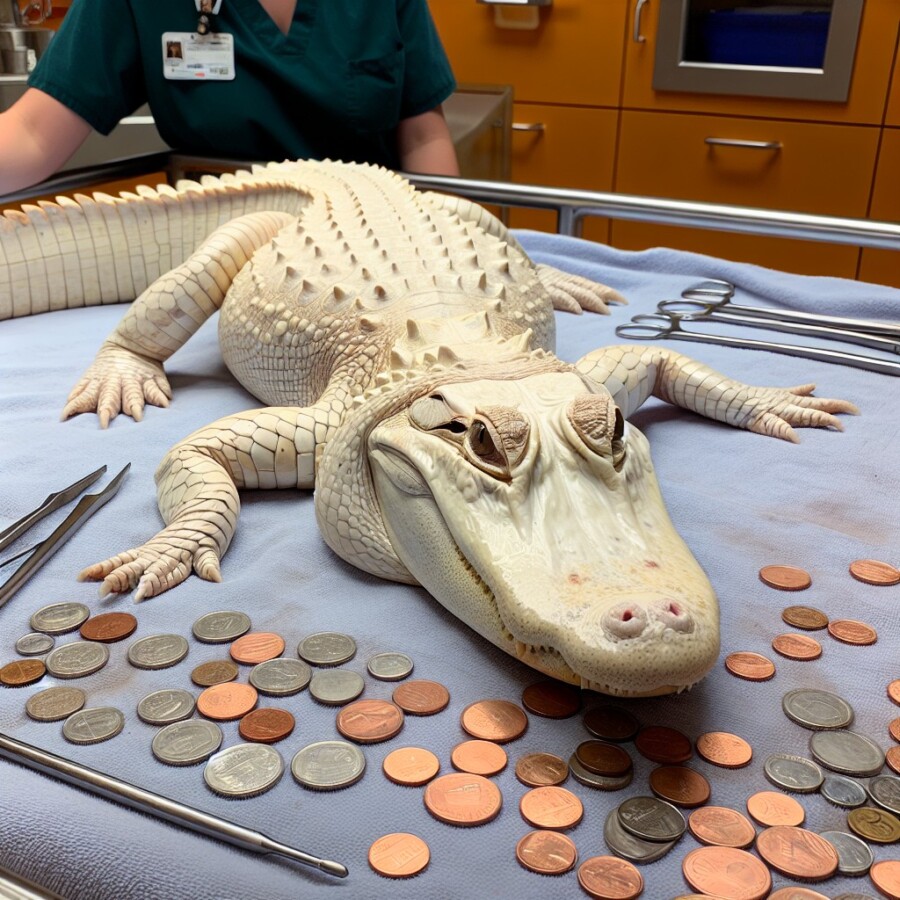New information from a big study in England shows that less children are very overweight. For kids aged 10 and 11, the number of very overweight kids went down from 23.4% to 22.7% between 2021 and 2023. For younger kids aged 4 and 5, the number went down from 10.1% to 9.2%. But, the study also showed that kids in poor areas are more likely to be very overweight than kids in rich areas.
Dr. Mike McKean, a big boss at the Royal College of Paediatrics and Child Health, said it’s not okay that kids in poor areas are more likely to be overweight. He said that two out of five kids leave primary school overweight, which can make them sick, sad, and not live as long. A person from the government said they want to make the number of very overweight kids half as much by 2030. They talked about putting money into school sports and programs like Healthy Start to help kids live healthier.
The study also showed a small increase in kids in Year 6 who are very underweight, with the number going up to 1.6% in 2022-23. Dr. McKean said this is because of not enough food and being poor. He said that food banks have too many people asking for food and teachers often see kids coming to school hungry. The study also showed that boys are more likely to be overweight than girls. The most very overweight kids in Year 6 were in the North East, West Midlands, and London, while the least were in the South West and South East.
Original news source: Childhood obesity shows slight fall in England (BBC)
Listen
Slow
Normal
Fast
Group or Classroom Activities
Warm-up Activities:
– News Summary
Instructions: In pairs, students will read the article and write a summary of the main points. They should include information about the decrease in very overweight children, the difference between poor and rich areas, the government’s goal for 2030, the increase in very underweight children, and the gender differences in overweight children. They should also include any other important details they find in the article.
– Opinion Poll
Instructions: In groups of four, students will discuss their opinions on the topic of childhood obesity. They should take turns asking each other questions such as: “Do you think the government should invest more money in school sports and programs like Healthy Start?” and “What do you think can be done to reduce childhood obesity?” After discussing, each group will share their opinions with the class.
– Vocabulary Pictionary
Instructions: In pairs, students will take turns drawing pictures to represent vocabulary words from the article. The other student must guess the word based on the picture. They can use words like “overweight,” “underweight,” “primary school,” “government,” “sports,” etc. They should try to use as many words from the article as possible.
– Speed Summarizing
Instructions: In pairs, students will take turns summarizing the main points of the article to their partner in 30 seconds or less. They should try to include information about the decrease in very overweight children, the difference between poor and rich areas, the government’s goal for 2030, the increase in very underweight children, and the gender differences in overweight children. After each student has had a turn, they can compare their summaries and see if they missed any important details.
– Future Predictions
Instructions: In pairs, students will discuss and make predictions about the future of childhood obesity based on the information in the article. They should consider questions such as: “Do you think the number of very overweight children will continue to decrease?” and “Will the government be successful in their goal to reduce childhood obesity by 2030?” After discussing, each pair will share their predictions with the class.
Comprehension Questions:
1. What does the new study from England show about the number of very overweight children?
2. Did the number of very overweight kids go up or down for kids aged 10 and 11?
3. Did the number of very overweight kids go up or down for younger kids aged 4 and 5?
4. Are kids in poor areas more likely or less likely to be very overweight than kids in rich areas?
5. What did Dr. Mike McKean say about kids in poor areas being overweight?
6. What does the government want to do by 2030 to help reduce the number of very overweight kids?
7. Did the study show an increase or decrease in the number of kids in Year 6 who are very underweight?
Go to answers ⇩
Listen and Fill in the Gaps:
New information from a big study in England (1)______ that less children are very (2)______. For kids aged 10 and 11, the (3)______ of very overweight kids went down from 23.4% to 22.7% between 2021 and 2023. For younger kids aged 4 and 5, the number went down from 10.1% to 9.2%. But, the study also showed that kids in poor areas are more likely to be very overweight than kids in rich (4)______.
Dr. Mike McKean, a big boss at the Royal College of Paediatrics and Child Health, said it’s not okay that kids in poor areas are more likely to be overweight. He said that two out of five kids (5)______ primary (6)______ overweight, which can make them sick, sad, and not live as long. A person from the government said they want to make the number of very overweight kids half as much by 2030. They (7)______ about putting money into school sports and programs like Healthy Start to help kids live (8)______.
The study also showed a (9)______ increase in kids in Year 6 who are very underweight, with the number going up to 1.6% in 2022-23. Dr. McKean said this is because of not enough food and being poor. He said that food banks have too many people (10)______ for food and teachers often see kids coming to school hungry. The (11)______ also (12)______ that boys are more likely to be overweight than girls. The most very overweight kids in Year 6 were in the North East, West Midlands, and London, while the least were in the South West and South East.
Go to answers ⇩
Discussion Questions:
Students can ask a partner these questions, or discuss them as a group.
1. What does it mean to be very overweight?
2. How would you feel if you were very overweight?
3. Do you like playing sports and being active? Why or why not?
4. Do you think it’s fair that kids in poor areas are more likely to be very overweight? Why or why not?
5. What do you think can be done to help kids live healthier?
6. Have you ever seen someone who is very underweight? How did it make you feel?
7. Why do you think some kids are very underweight?
8. Do you think it’s important for schools to have sports programs? Why or why not?
9. How do you think being very overweight can make a person sick and sad?
10. Do you know anyone who goes to food banks? How do you think it feels to not have enough food?
11. Why do you think boys are more likely to be overweight than girls?
12. How can we help kids in poor areas have the same opportunities to be healthy as kids in rich areas?
Individual Activities
Vocabulary Meanings:
Match each word to its meaning.
Words:
1. overweight
2. study
3. kids
4. poor
5. primary school
6. government
7. food
8. boys
Meanings:
(a) Children
(b) The people who make rules and decisions for a country
(c) The first school children go to
(d) Something you eat to stay alive and healthy
(e) A big research project to learn new things
(f) Not having enough money or resources
(g) When someone weighs more than they should
(h) Male children
Go to answers ⇩
Multiple Choice Questions:
1. According to the study, what percentage of kids aged 10 and 11 were very overweight in 2023?
(a) 23.4%
(b) 10.1%
(c) 22.7%
(d) 9.2%
2. What did the study show about the number of very overweight kids aged 4 and 5?
(a) It went down from 10.1% to 9.2%.
(b) It went up from 23.4% to 22.7%.
(c) It stayed the same.
(d) It increased to 1.6%.
3. According to Dr. Mike McKean, why is it not okay that kids in poor areas are more likely to be overweight?
(a) It can make them sick, sad, and not live as long.
(b) It doesn’t affect their health.
(c) It makes them happier and healthier.
(d) It’s just a natural part of growing up.
4. What is the government’s goal for the number of very overweight kids by 2030?
(a) To make it double the current number.
(b) To make it half as much as it is now.
(c) To keep it the same.
(d) To eliminate it completely.
5. What are some of the things the government wants to invest money in to help kids live healthier?
(a) Junk food and video games.
(b) School sports and programs like Healthy Start.
(c) TV shows and toys.
(d) Candy and soda.
6. According to the study, why did the number of very underweight kids in Year 6 increase?
(a) Because they were eating too much junk food.
(b) Because they were exercising too much.
(c) Because of not enough food and being poor.
(d) Because they were not getting enough sleep.
7. What did the study show about the difference between boys and girls in terms of being overweight?
(a) Girls are more likely to be overweight than boys.
(b) Boys and girls are equally likely to be overweight.
(c) The study did not mention anything about the difference between boys and girls.
(d) Boys are more likely to be overweight than girls.
8. According to the study, which regions in England had the most very overweight kids in Year 6?
(a) South West and South East.
(b) North West and Yorkshire.
(c) East Midlands and East of
(d) North East, West Midlands, and London.
True or False Questions:
1. According to a study in England, the number of very overweight children has decreased for both 10 and 11-year-olds as well as 4 and 5-year-olds.
2. The government aims to increase the number of very overweight children by half by 2030 and plans to divest in school sports and programs like Healthy Start to promote healthier lifestyles.
3. Food banks have seen a decline in people seeking food assistance, and teachers rarely witness students coming to school hungry.
4. The study also revealed a small decrease in the number of very underweight children in Year 6, which may be due to lack of food and poverty.
5. Boys are more likely to be overweight than girls, with the highest number of very overweight children in Year 6 found in the North East, West Midlands, and London, while the lowest number was in the South West and South East.
6. Two out of five children leave primary school underweight, which can lead to health problems and a shorter lifespan.
7. The study also found that children in poor areas are more likely to be very overweight compared to children in rich areas.
8. Dr. Mike McKean, a leader at the Royal College of Paediatrics and Child Health, believes it is not acceptable that children in poor areas are more likely to be overweight.
Go to answers ⇩
Write a Summary:
Write a summary of this news article in two sentences.
Writing Questions:
Answer the following questions. Write as much as you can for each answer.
1. According to the study, did the number of very overweight kids in England go up or down?
2. Are kids in poor areas more likely to be very overweight or very underweight?
3. Why did Dr. Mike McKean say it’s not okay for kids in poor areas to be overweight?
4. What does the government want to do by 2030 to help reduce the number of very overweight kids?
5. Are boys or girls more likely to be overweight according to the study?
Answers
Comprehension Question Answers:
1. The new study from England shows that the number of very overweight children has decreased.
2. The number of very overweight kids aged 10 and 11 went down.
3. The number of very overweight kids aged 4 and 5 also went down.
4. Kids in poor areas are more likely to be very overweight than kids in rich areas.
5. Dr. Mike McKean said it’s not okay that kids in poor areas are more likely to be overweight. He said it can make them sick, sad, and not live as long.
6. The government wants to make the number of very overweight kids half as much by 2030. They want to put money into school sports and programs like Healthy Start to help kids live healthier.
7. The study showed an increase in the number of kids in Year 6 who are very underweight.
Go back to questions ⇧
Listen and Fill in the Gaps Answers:
(1) shows
(2) overweight
(3) number
(4) areas
(5) leave
(6) school
(7) talked
(8) healthier
(9) small
(10) asking
(11) study
(12) showed
Go back to questions ⇧
Vocabulary Meanings Answers:
1. overweight
Answer: (g) When someone weighs more than they should
2. study
Answer: (e) A big research project to learn new things
3. kids
Answer: (a) Children
4. poor
Answer: (f) Not having enough money or resources
5. primary school
Answer: (c) The first school children go to
6. government
Answer: (b) The people who make rules and decisions for a country
7. food
Answer: (d) Something you eat to stay alive and healthy
8. boys
Answer: (h) Male children
Go back to questions ⇧
Multiple Choice Answers:
1. According to the study, what percentage of kids aged 10 and 11 were very overweight in 2023?
Answer: (c) 22.7%
2. What did the study show about the number of very overweight kids aged 4 and 5?
Answer: (a) It went down from 10.1% to 9.2%.
3. According to Dr. Mike McKean, why is it not okay that kids in poor areas are more likely to be overweight?
Answer: (a) It can make them sick, sad, and not live as long.
4. What is the government’s goal for the number of very overweight kids by 2030?
Answer: (b) To make it half as much as it is now.
5. What are some of the things the government wants to invest money in to help kids live healthier?
Answer: (b) School sports and programs like Healthy Start.
6. According to the study, why did the number of very underweight kids in Year 6 increase?
Answer: (c) Because of not enough food and being poor.
7. What did the study show about the difference between boys and girls in terms of being overweight?
Answer: (d) Boys are more likely to be overweight than girls.
8. According to the study, which regions in England had the most very overweight kids in Year 6?
Answer: (d) North East, West Midlands, and London.
Go back to questions ⇧
True or False Answers:
1. According to a study in England, the number of very overweight children has decreased for both 10 and 11-year-olds as well as 4 and 5-year-olds. (Answer: True)
2. The government aims to increase the number of very overweight children by half by 2030 and plans to divest in school sports and programs like Healthy Start to promote healthier lifestyles. (Answer: False)
3. Food banks have seen a decline in people seeking food assistance, and teachers rarely witness students coming to school hungry. (Answer: False)
4. The study also revealed a small decrease in the number of very underweight children in Year 6, which may be due to lack of food and poverty. (Answer: False)
5. Boys are more likely to be overweight than girls, with the highest number of very overweight children in Year 6 found in the North East, West Midlands, and London, while the lowest number was in the South West and South East. (Answer: True)
6. Two out of five children leave primary school underweight, which can lead to health problems and a shorter lifespan. (Answer: False)
7. The study also found that children in poor areas are more likely to be very overweight compared to children in rich areas. (Answer: True)
8. Dr. Mike McKean, a leader at the Royal College of Paediatrics and Child Health, believes it is not acceptable that children in poor areas are more likely to be overweight. (Answer: True)
Go back to questions ⇧












